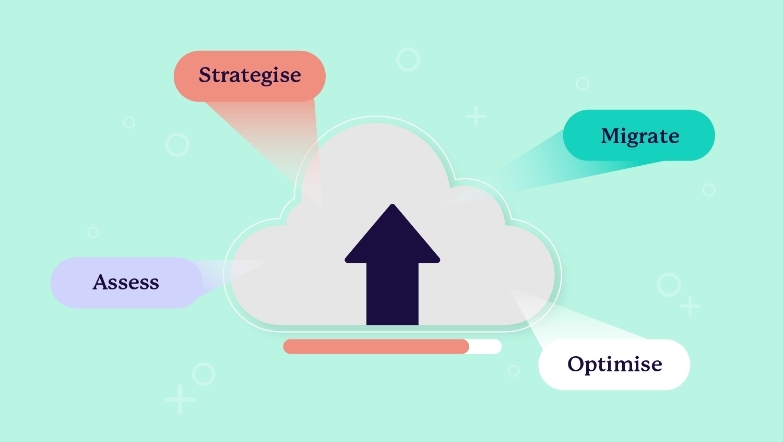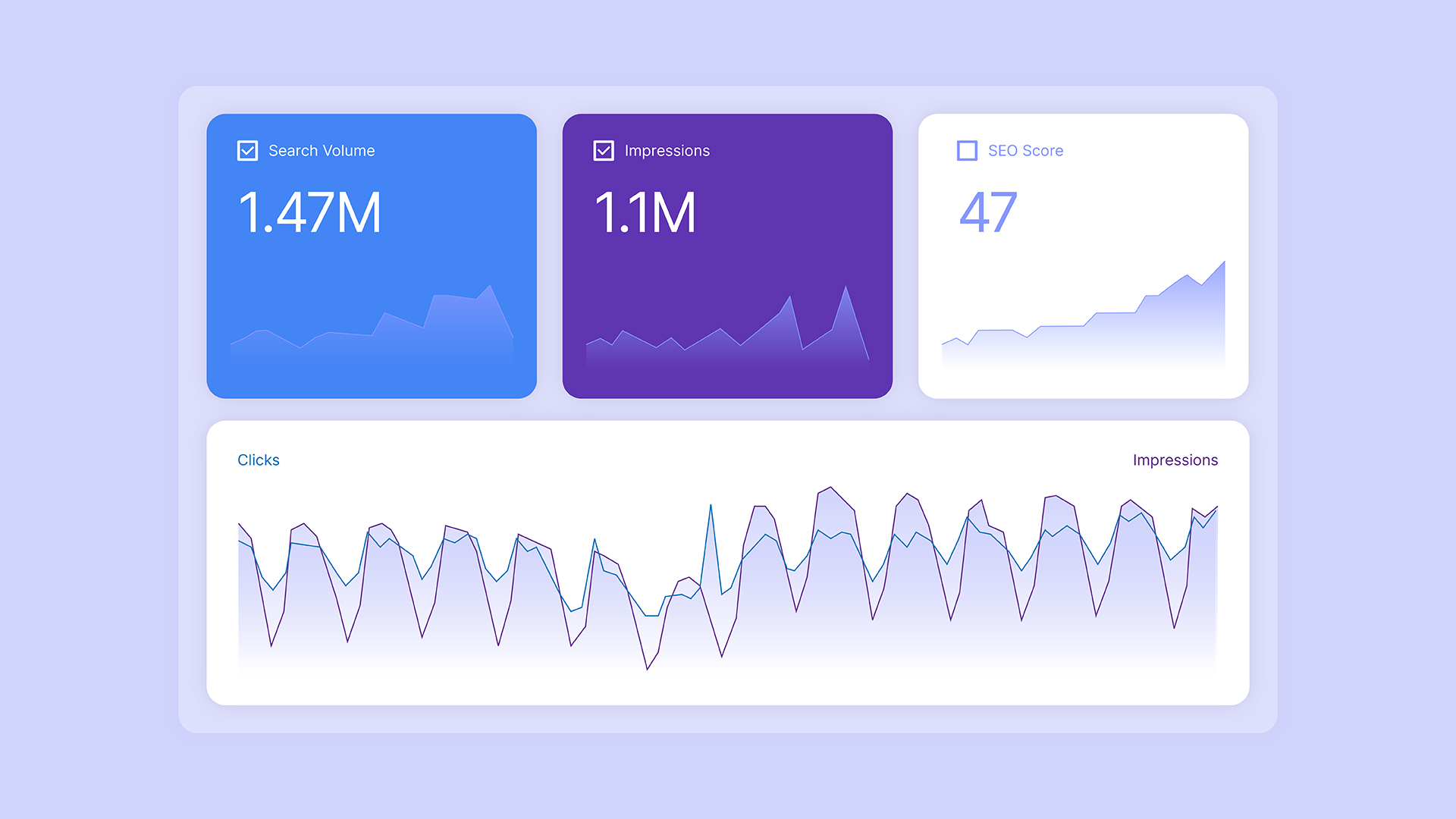In today’s rapidly evolving digital landscape, migration to the cloud has become a necessary step for many businesses seeking to harness the power of modern technology and keep their digital assets safe.
Cloud services provide businesses unparalleled flexibility, scalability, and efficiency. However, transitioning to the cloud requires careful planning and execution.
In this article we delve into the process of cloud migration, laying a foundation for your successful migration journey.
Pre-Migration Planning
The first step in a successful cloud migration is establishing a clear vision that aligns IT capabilities with business objectives. This vision will guide the technical aspects of the migration as well reflect the broader business strategy. It’s essential to communicate this vision across the organization to ensure everyone understands and supports the migration objectives. A well-articulated vision helps inform decisions that align with the medium to long-term goals of the organization.
Cloud Governance Model
A robust cloud governance model is integral. It involves defining the roles and responsibilities within the team, ensuring compliance with security standards, and establishing protocols for access and usage of cloud services. This model should address key questions such as the number of cloud accounts required, access privileges, and how these access rights will be managed. Effective governance aids in maintaining security and operational efficiency in the cloud environment.
Staff Training
The proficiency of your team in cloud technologies is important to the migration process. Early and comprehensive training ensures that your team is well-equipped to handle the transition smoothly. It’s also important to cultivate internal evangelists who can champion the migration within the organization, helping to facilitate a culture that embraces the cloud.
Operational Planning
Cloud migration is not just a technology shift, it’s also an operational one. It is crucial to assess and adapt your existing operational processes for the cloud. This includes reviewing current practices, identifying necessary changes, and selecting operational tools that are compatible with cloud technologies.
Asset Inventory
Understanding the scope of your IT assets is a cornerstone of cloud migration. This entails a thorough inventory of the applications and workloads to be migrated. The use of discovery tools can streamline this process, minimizing the risks of overlooking dependencies during migration. A comprehensive asset inventory helps quantify the impact of cloud adoption and measuring the success of the migration.
Choosing the Right Cloud Environment and Provider
Selecting the right cloud environment and provider is as critical as the initial planning. It requires a careful assessment of your business needs, security requirements, compliance, budget, and the specific features offered by each provider.
Choosing the Right Cloud Environment
The decision on the cloud environment is pivotal and should be based on the unique requirements of your business. Here are the primary options:
- Public Cloud: This is a multi-tenant environment that provides access to computing resources over the internet. It’s ideal for businesses looking for scalability, cost-effectiveness, and minimal maintenance.
- Private Cloud: A private cloud provides a dedicated environment within an organization’s data centre. It’s suitable for businesses that require enhanced control and security.
- Hybrid Cloud: This environment combines public and private clouds, allowing for flexible movement of workloads. It’s appropriate for businesses that need both the security of a private cloud and the scalability of a public cloud.
- Multi-Cloud: This approach involves using multiple public cloud services. It’s relevant for businesses looking to avoid vendor lock-in and optimize the best features of different cloud providers.
Choosing a Cloud Service Provider
Once you’ve determined the suitable cloud environment, the next critical step is selecting the right cloud service provider. Each provider offers a unique blend of services, and the choice should be based on several key factors:
Security: Evaluate the security measures and protocols of the provider. Ensure they align with your business’s security requirements and standards.
Compliance: Check if the provider meets relevant industry standards and compliance requirements. This is especially important for businesses in regulated sectors.
Availability and Reliability: Consider the provider’s track record for uptime and reliability. Regular service outages can significantly impact your business operations.
Support Services: Assess the level and quality of customer support offered. Effective and timely support is crucial in resolving any issues that arise during and after migration.
Pricing Structure: Understand the provider’s pricing model. Compare it against your budget and the anticipated return on investment. Consider not just the initial costs but also the long-term expenses.
Migration Execution
The execution phase of cloud migration is where planning meets reality. It requires a balanced approach that starts with manageable, low-risk projects, embraces the power of automation, views the migration as a transformational change, and leverages the expertise of managed services.
Start Small and Simple
Beginning with smaller, less complex migration projects can provide quick wins and build confidence. These initial successes are crucial for gaining internal support and demonstrating the tangible benefits of cloud migration. They allow your team to familiarize themselves with the cloud environment and its capabilities, setting a positive precedent for more significant migrations.
- Identify Low-Risk Workloads: Start by migrating non-critical applications or data which pose minimal risk to business operations.
- Gain Momentum: Use these initial migrations to refine your processes and prepare for more complex migrations.
Embrace Automation
One of the key advantages of cloud computing is its capacity for automation. Automating repetitive tasks not only speeds up the migration process but also reduces the risk of human error.
- Automate Migration Processes: Leverage tools and technologies that automate the migration of data and applications to the cloud.
- Continuous Integration and Deployment (CI/CD): Implement CI/CD pipelines to streamline development and deployment processes in the cloud.
Transformational Approach
Cloud migration should be viewed not just as a shift in technology but as a transformational change that can redefine how a business operates.
- Rethink Business Processes: Adjust internal processes to align with the capabilities and benefits of cloud computing.
- Innovate: Use this opportunity to innovate business models and services, taking advantage of the cloud’s scalability and flexibility.
Utilize Managed Services
Managed cloud services can significantly reduce the burden of day-to-day maintenance and management of cloud environments, allowing your team to focus on core business functions.
- Leverage Expertise: Managed service providers bring specialized knowledge and experience in managing cloud environments.
- Optimize Operations: Managed services can help optimize cloud operations, ensuring efficiency and cost-effectiveness.
Post-Migration Practices
After successfully migrating to the cloud, the focus shifts to optimizing and managing the new environment. It involves diligent monitoring of performance and costs, using the right tools to gain insights into your cloud operations, and leveraging the support services of your cloud provider. This phase is not just about maintaining your cloud environment but continuously improving it to meet your evolving business needs.
Comprehensive Monitoring
Post-migration is the time to ensure that your cloud architecture is performing as expected. Effective monitoring strategies are essential for this.
- Monitor Performance and Costs: Implement a comprehensive monitoring strategy that covers both the performance of your applications and the costs associated with cloud resources. This will help identify areas for optimization.
- Data-Driven Insights: Utilize monitoring data to make informed decisions about your cloud environment, balancing performance with cost efficiency.
Utilize Cloud-Native Monitoring Tools
Cloud-native tools offer specialized monitoring capabilities that are often more effective and efficient than traditional tools in a cloud environment.
- Select Suitable Tools: Choose monitoring tools that fit your specific business needs and are compatible with your cloud provider’s environment.
- Application-Level Insights: Look for tools that provide deep insights into application performance and user experience, enabling you to fine-tune your services.
Leverage Enterprise Support
For businesses using AWS or similar enterprise-level cloud services, taking advantage of the support and resources offered by these platforms can be invaluable.
- Technical and Operational Guidance: Utilize the technical account managers and support teams provided by your cloud service provider to get expert advice on optimizing your cloud environment.
- Resolve Issues Efficiently: Enterprise support can offer quick resolution to technical issues, minimizing downtime and keeping your operations smooth.
Addressing Special Considerations
The journey of cloud migration extends beyond the initial move to the cloud. It encompasses adapting to new governance models, navigating the complexities of various cloud environments, and continuously refining the migration strategy. By addressing these special considerations, businesses can ensure a comprehensive and effective transition to the cloud, setting a foundation for ongoing innovation and growth.
Compliance and Governance
As businesses migrate to the cloud, compliance with regulatory standards and effective governance becomes paramount. This transition often involves a shift from traditional on-premises security and control to reliance on cloud provider offerings.
- Adapt Governance Strategies: Modify your governance methods to align with cloud-based applications. This includes understanding the shared responsibility model where the cloud provider manages certain aspects of security, while you are responsible for others.
- Ensure Compliance: Work closely with your IT governance teams and the cloud adoption team to ensure your cloud environment meets all regulatory and compliance requirements.
Cloud-to-Cloud Migration Challenges
Cloud migrations aren’t limited to moving from on-premises to cloud environments; they often involve moving data and applications between different cloud providers or between private and public clouds.
- Plan for Complexity: Cloud-to-cloud migrations require careful planning, as they can involve significant manual labour, particularly for configuration and testing.
- Testing and Configuration: Ensure thorough testing and necessary configurations are done for virtual machines, networks, and operating systems during cloud-to-cloud migrations.
Define Your Cloud Migration Strategy
The final step in cloud migration is defining an ongoing strategy that aligns with your business goals and addresses any residual technology on-premises.
- Decide on Technology Utilization: Determine how to repurpose or decommission any leftover on-premises technology post-migration.
- Set Migration Timeframes: Establish clear timeframes for migrating different sets of data and applications. Consider starting with less critical applications and gradually moving to more essential ones.
Navigating the Cloud Migration Journey
The journey of cloud migration is a transformative process that extends far beyond a mere shift in technology. It encapsulates a strategic realignment of business processes, operations, and goals.
This article has overviewed the various stages of cloud migration, from initial planning to post-migration optimization, providing businesses with a roadmap for a successful transition to the cloud. By following these best practices, businesses can achieve a cloud environment that is not only efficient and secure but also aligned with their evolving business needs and objectives.
Frequently Asked Questions
What are the main benefits of migrating to the cloud?
The main benefits of migrating your website to the cloud include increased uptime, cost savings, faster site load speeds, scalability, enhanced data security, and access to advanced technologies and automatic updates.
How do I choose the right cloud provider for my needs?
Different cloud providers have different advantages. Consider factors such as the provider’s reliability, security standards, compatibility with existing systems, support services, and cost structure.
What is the first step in planning to migrate to the cloud?
The first step is conducting an assessment of your current IT infrastructure, identifying business needs and goals, and determining the type of cloud services that best align with your objectives.
Ready to transition your business to the Cloud?
If you’re ready to investigate how your business can benefit through cloud migration, Greenhat has the unique blend of technical acumen and strategic insight to help you get the most out of your migration. For a free consultation, contact our team today.








